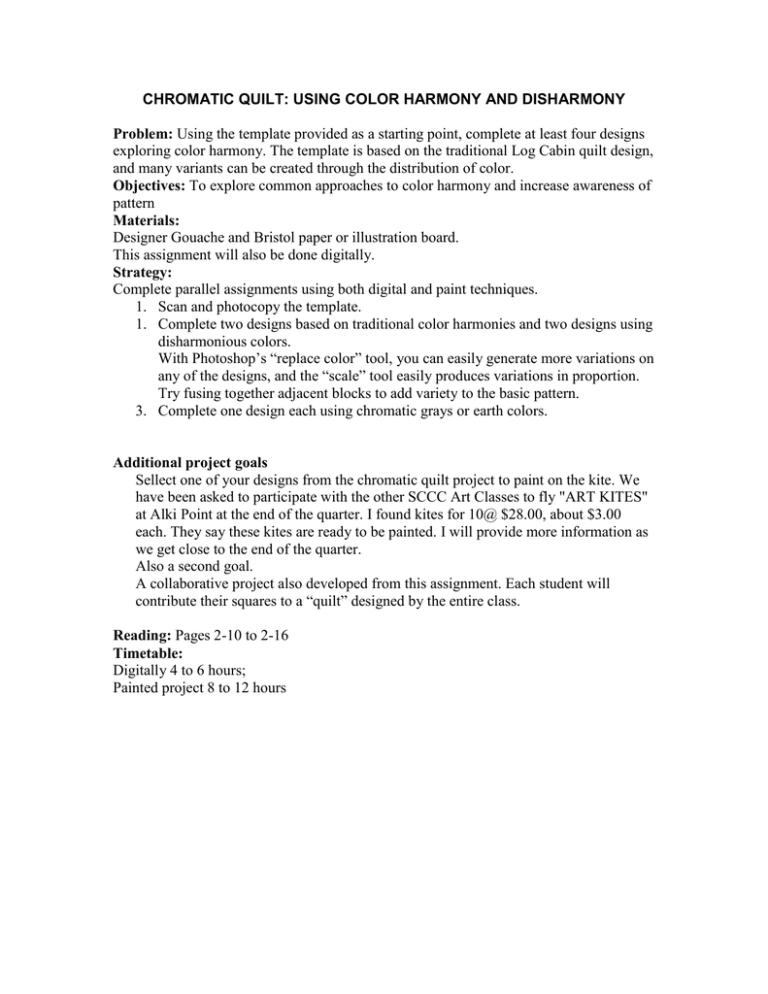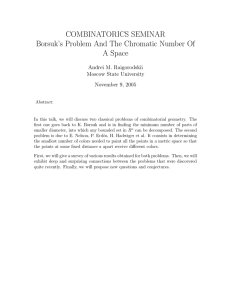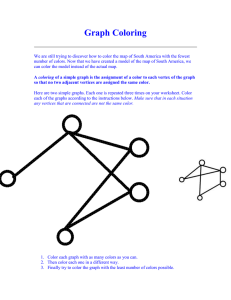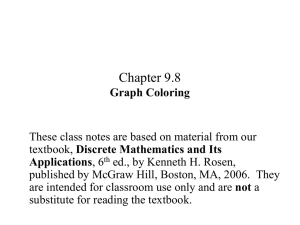Color Project II
advertisement

CHROMATIC QUILT: USING COLOR HARMONY AND DISHARMONY Problem: Using the template provided as a starting point, complete at least four designs exploring color harmony. The template is based on the traditional Log Cabin quilt design, and many variants can be created through the distribution of color. Objectives: To explore common approaches to color harmony and increase awareness of pattern Materials: Designer Gouache and Bristol paper or illustration board. This assignment will also be done digitally. Strategy: Complete parallel assignments using both digital and paint techniques. 1. Scan and photocopy the template. 1. Complete two designs based on traditional color harmonies and two designs using disharmonious colors. With Photoshop’s “replace color” tool, you can easily generate more variations on any of the designs, and the “scale” tool easily produces variations in proportion. Try fusing together adjacent blocks to add variety to the basic pattern. 3. Complete one design each using chromatic grays or earth colors. Additional project goals Sellect one of your designs from the chromatic quilt project to paint on the kite. We have been asked to participate with the other SCCC Art Classes to fly "ART KITES" at Alki Point at the end of the quarter. I found kites for 10@ $28.00, about $3.00 each. They say these kites are ready to be painted. I will provide more information as we get close to the end of the quarter. Also a second goal. A collaborative project also developed from this assignment. Each student will contribute their squares to a “quilt” designed by the entire class. Reading: Pages 2-10 to 2-16 Timetable: Digitally 4 to 6 hours; Painted project 8 to 12 hours CHROMATIC QUILT Instructor’s Notes: Color relationships often determine the success or failure of a design, and many theories of color harmony have been developed to help artists, architects, and designers make good choices. In a monochromatic system, variations on a single hue are used. Adjacent colors in the spectrum are used in an analogous color scheme. Complementary colors are opposites on a traditional color wheel. Another group of colors, often overlooked, are the chromatic grays and earth colors. Chromatic grays are made from primary and secondary colors plus white—no black is used. Earth colors can be bought directly from a paint company (raw sienna, burnt sienna, raw and burnt umber, and yellow ochre are the most common examples), or simulated by mixing the primary and secondary colors As class time permits, the assignment can be as concise or as expansive. There is a great opportunity to talk about pattern as well as experiment with color harmony and disharmony. The last part of this project is to play together, I hope we are ready to have fun. To know how to suggest is the great art of teaching. -Henri Amiel, 1887




